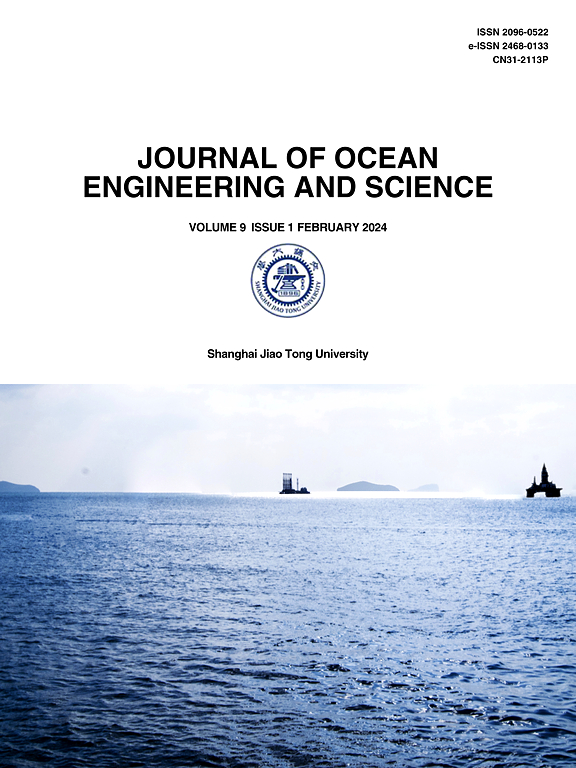Mechanism analysis and prediction of longitudinal cut wave pattern resistance based on CFD simulation
IF 11.8
1区 工程技术
Q1 ENGINEERING, MARINE
引用次数: 0
Abstract
Inspired by ITTC 2021 (International Towing Tank Conference), this paper implements the Longitudinal Cut Method (LCM), a methodology to predict wave pattern resistance (Rwp), within Computational Fluid Dynamics (CFD) simulation to explore its mechanism and feasibility in predicting wave resistance (Rw). To accurately predict the free surface, a validation study, including the grid convergence index (GCI), wave profile, and wave pattern, is conducted for a Series 60 ship model. Next, Rwp is appropriately evaluated and compared with the experiment. The influence of the transverse wave component on the LCM analysis is also discussed. Furthermore, a comparison between the EFD (Experimental Fluid Dynamics) and CFD-based LCM is made through the analysis of the Wigley Catamaran, highlighting the advantages of the present approach. Finally, the limitations of the LCM theory are systematically discussed with the nonlinear bow wave analysis of a wall-sided ship model by introducing the local adaptive mesh refinement (LAMR) approach. For the fine hull form, LCM has been validated as a suitable methodology for directly predicting Rw and consequently the other primary resistance components (frictional resistance Rf and viscous pressure resistance Rpv) by one simulation. In contrast, due to energy dissipation of the non-negligible nonlinear local field wave component in the downstream wake region, Rw could be underestimated for the full hull form.
基于CFD模拟的纵切波纹阻力机理分析与预测
受ITTC 2021(国际拖曳舱会议)的启发,本文在计算流体动力学(CFD)模拟中实现了纵向切割法(LCM),这是一种预测波型阻力(Rwp)的方法,以探索其预测波型阻力(Rw)的机制和可行性。为了准确地预测自由面,对60系列船舶模型进行了网格收敛指数(GCI)、波浪剖面和波浪型的验证研究。接下来,对Rwp进行适当的评估,并与实验进行比较。讨论了横波分量对LCM分析的影响。此外,通过对Wigley双体船的分析,比较了实验流体动力学(EFD)和基于cfd的LCM,突出了该方法的优势。最后,通过引入局部自适应网格细化(LAMR)方法,系统地讨论了LCM理论的局限性。对于细船型,LCM已通过一次模拟验证为直接预测Rw以及其他主要阻力分量(摩擦阻力Rf和粘性压力阻力Rpv)的合适方法。相反,由于下游尾迹区不可忽略的非线性局部场波分量的能量耗散,对于全船型,Rw可能被低估。
本文章由计算机程序翻译,如有差异,请以英文原文为准。
求助全文
约1分钟内获得全文
求助全文
来源期刊

Journal of Ocean Engineering and Science
Multiple-
CiteScore
11.50
自引率
19.70%
发文量
224
审稿时长
29 days
期刊介绍:
The Journal of Ocean Engineering and Science (JOES) serves as a platform for disseminating original research and advancements in the realm of ocean engineering and science.
JOES encourages the submission of papers covering various aspects of ocean engineering and science.
 求助内容:
求助内容: 应助结果提醒方式:
应助结果提醒方式:


